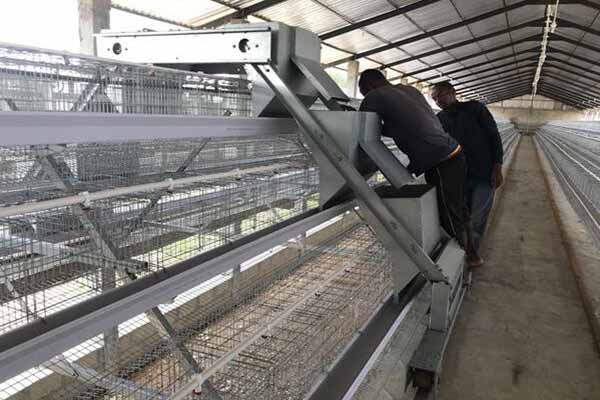Optimizing Chicken Battery Cages for 250,000 Chickens in Kenya
Introduction
The poultry industry in Kenya is rapidly growing, with a significant demand for chicken production. One of the key elements in ensuring efficient and profitable chicken farming is the use of battery cages. This article discusses the design and optimization of battery cages for a farm housing 250,000 chickens, focusing on the unique challenges and benefits in the Kenyan context.
Key Considerations for Chicken Battery Cages
When considering the construction of chicken battery cages for 250,000 chickens, several factors need to be taken into account:
- Space Allocation: Each chicken requires approximately 0.4 square meters of space. With 250,000 chickens, this means an area of 100,000 square meters.
- Airflow and Ventilation: Proper airflow is crucial for the health and productivity of the chickens. The design should ensure that each cage receives adequate ventilation.
- Material Quality: High-quality steel or galvanized metal is recommended for the construction of battery cages to ensure durability and prevent corrosion.
- Layering System: Implementing a multi-layered system allows for optimal use of space and easy management of the flock.
Benefits of High-Capacity Chicken Battery Cages
– Increased Production: With the right design, a farm with 250,000 chickens can achieve a significant increase in egg production compared to smaller setups.
– Reduced Labor Costs: By automating certain processes, such as feeding and cleaning, labor costs can be minimized.
– Better Control of the Flock: High-capacity battery cages allow for better control over the flock’s health and behavior, leading to improved productivity.
Challenges and Solutions
– Water Supply: Ensuring a reliable water supply for 250,000 chickens can be challenging. Installing a robust irrigation system and regular maintenance are essential.
– Energy Consumption: A large-scale operation requires substantial energy to power the farm’s systems. Investing in renewable energy sources can help reduce costs.
– Health Management: Proper health management is critical to prevent disease outbreaks. Regular vaccinations, monitoring, and proper waste management are crucial.
Conclusion
Constructing chicken battery cages for 250,000 chickens in Kenya requires careful planning and attention to detail. By considering the factors outlined in this article, farmers and investors can optimize their operations for success.
To learn more about our custom solutions for high-capacity chicken farming and to request a free design plan and equipment quote, please leave a comment below.





